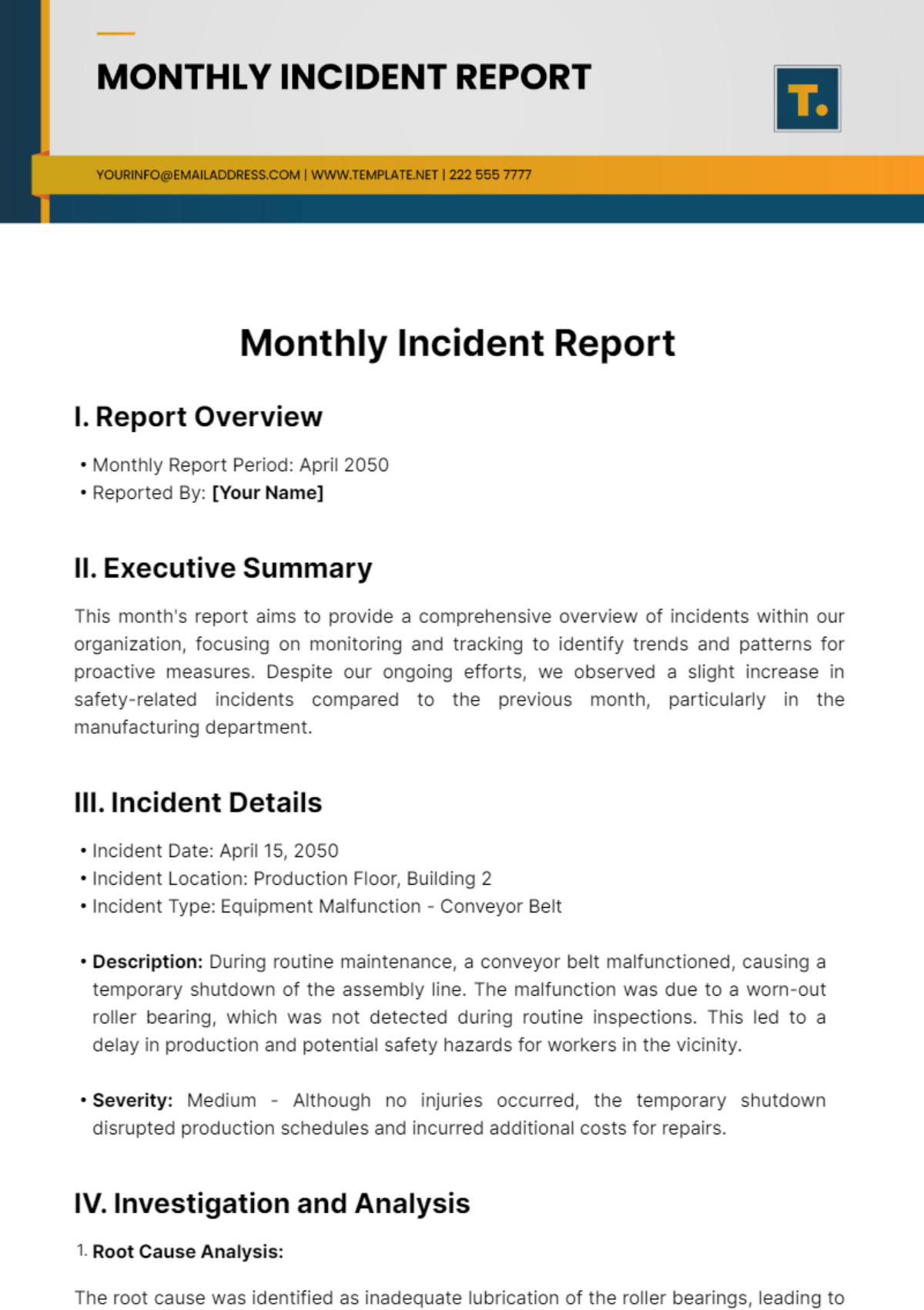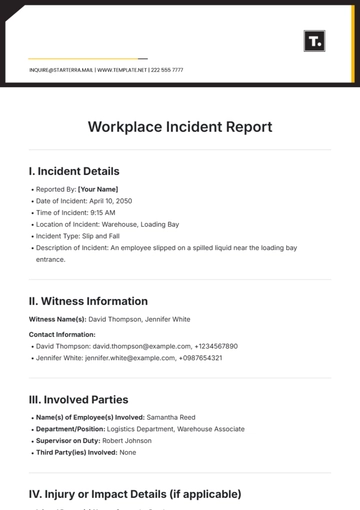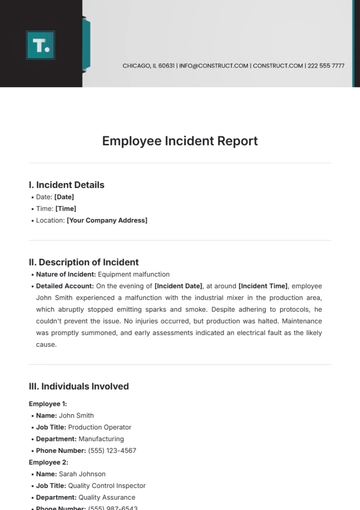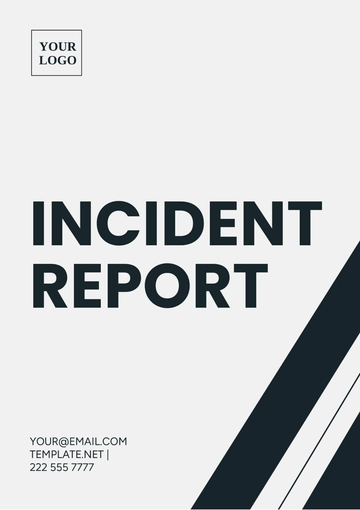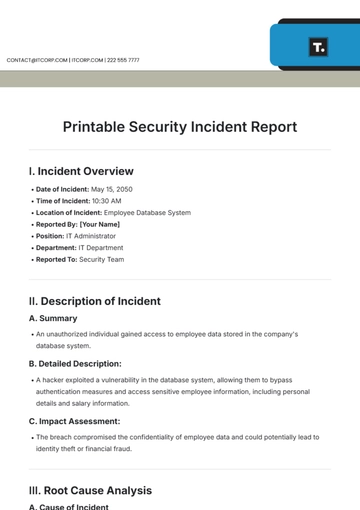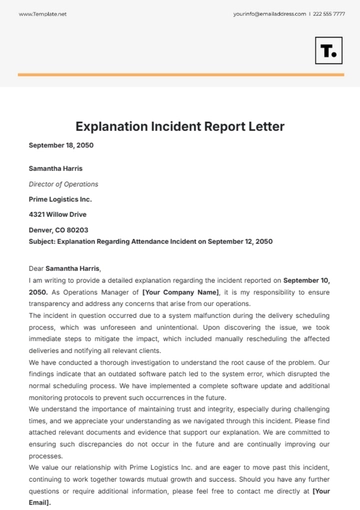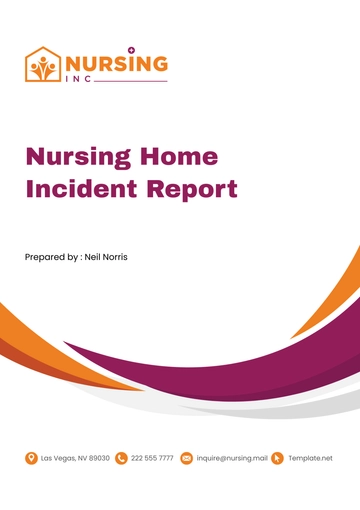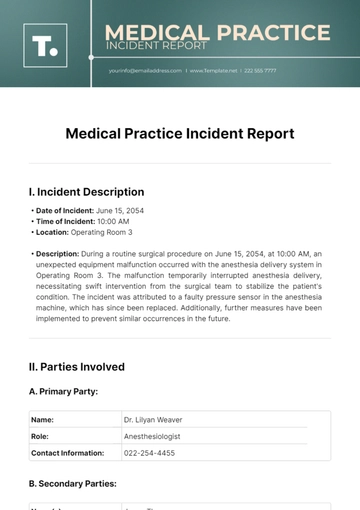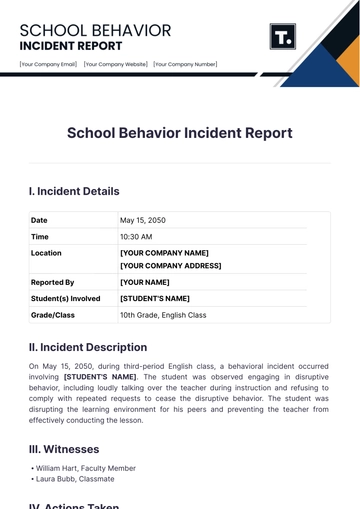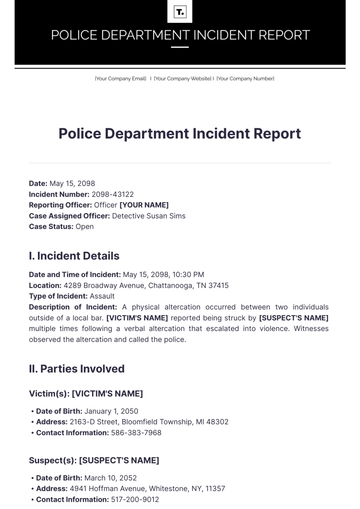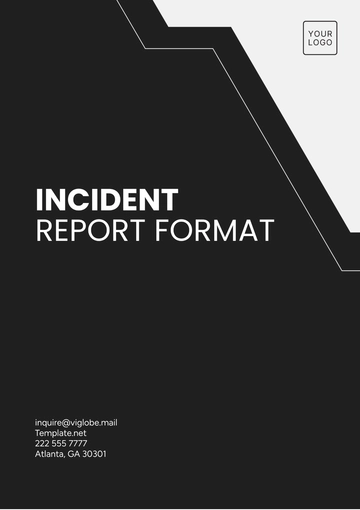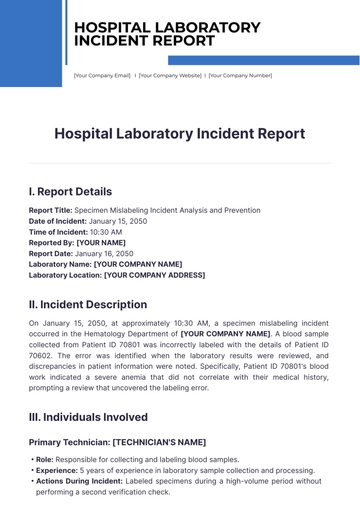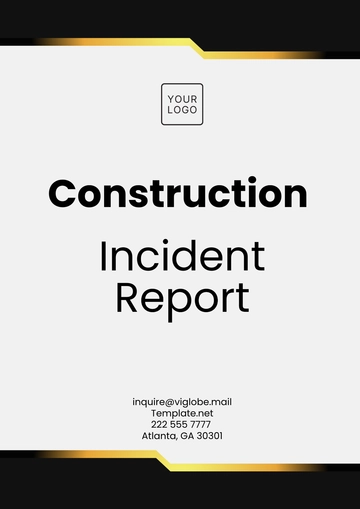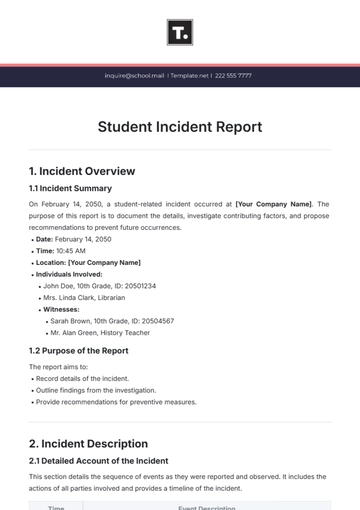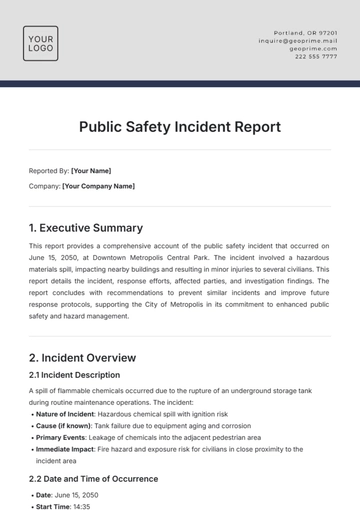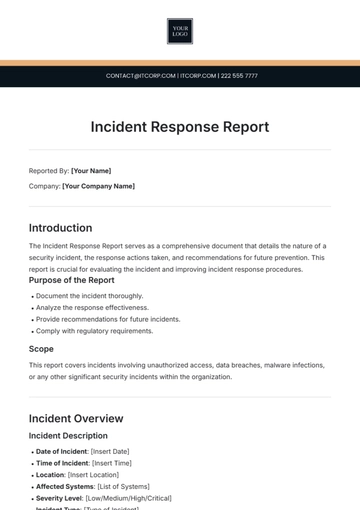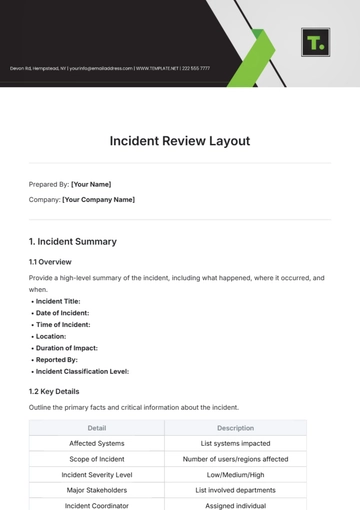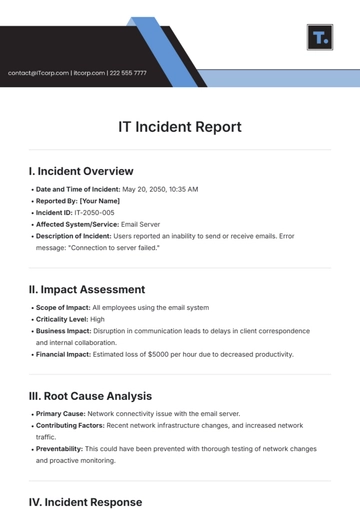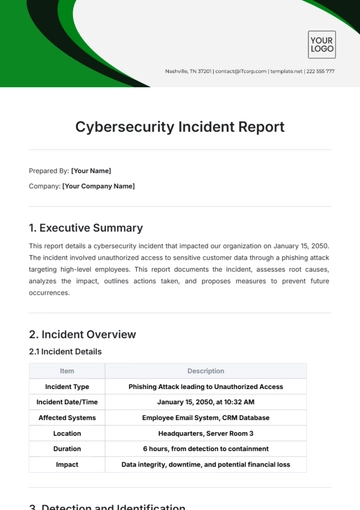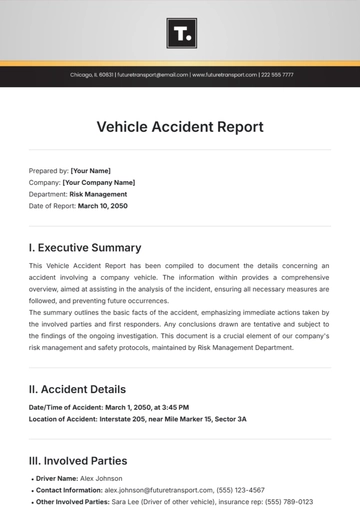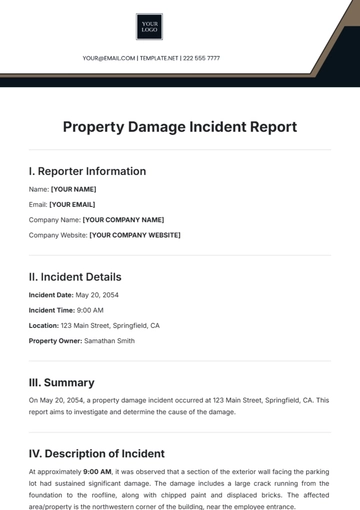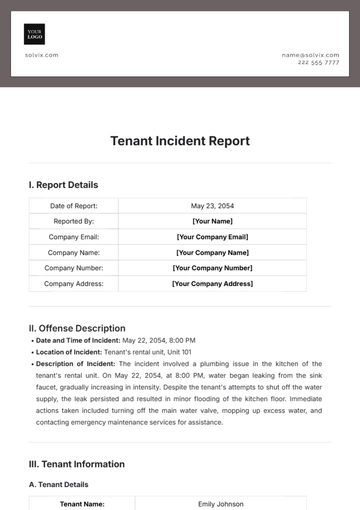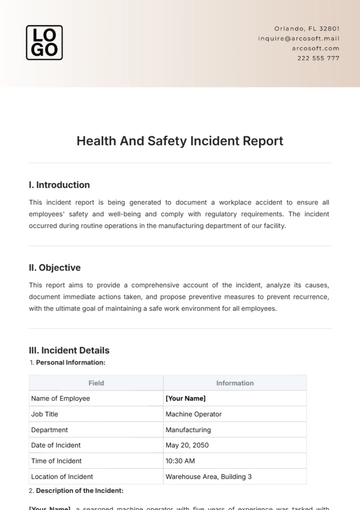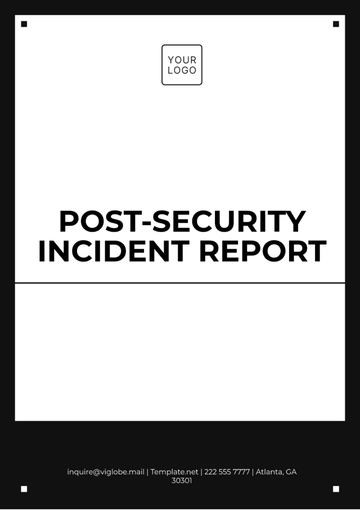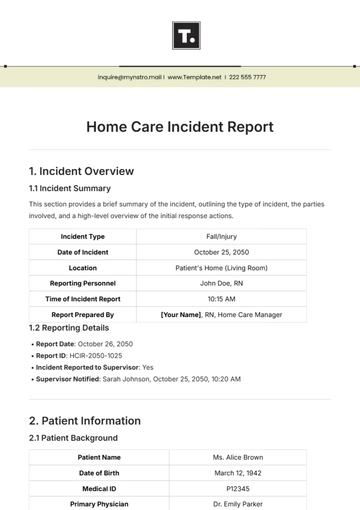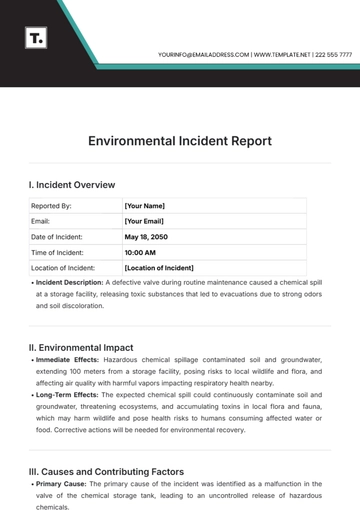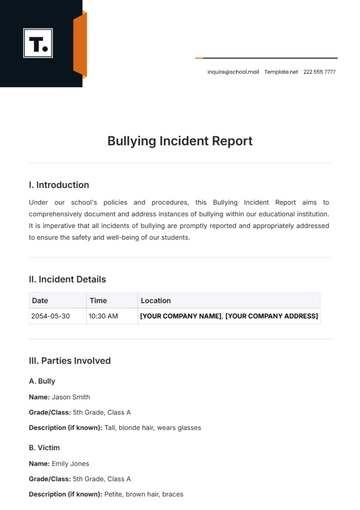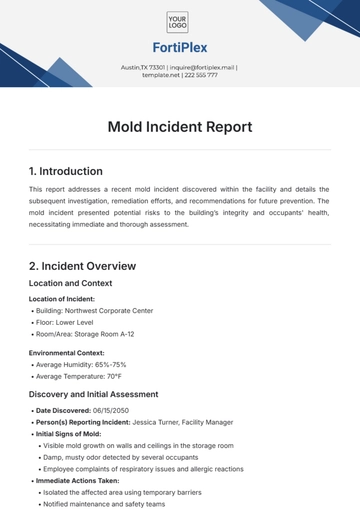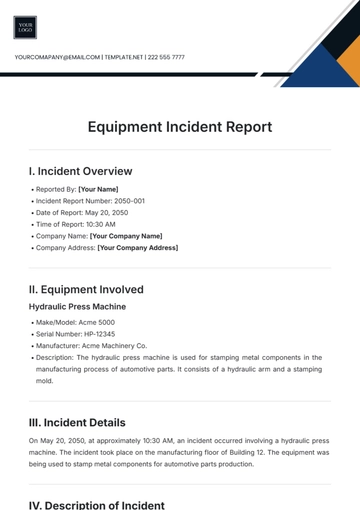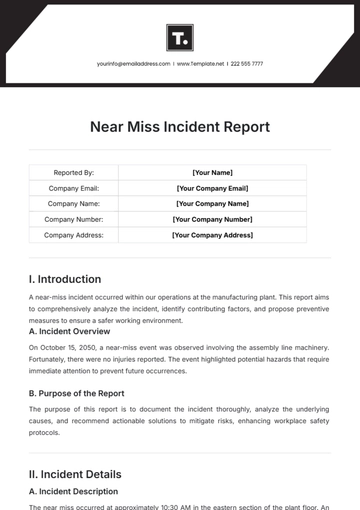Monthly Incident Report
I. Report Overview
II. Executive Summary
This month's report aims to provide a comprehensive overview of incidents within our organization, focusing on monitoring and tracking to identify trends and patterns for proactive measures. Despite our ongoing efforts, we observed a slight increase in safety-related incidents compared to the previous month, particularly in the manufacturing department.
III. Incident Details
Incident Date: April 15, 2050
Incident Location: Production Floor, Building 2
Incident Type: Equipment Malfunction - Conveyor Belt
Description: During routine maintenance, a conveyor belt malfunctioned, causing a temporary shutdown of the assembly line. The malfunction was due to a worn-out roller bearing, which was not detected during routine inspections. This led to a delay in production and potential safety hazards for workers in the vicinity.
Severity: Medium - Although no injuries occurred, the temporary shutdown disrupted production schedules and incurred additional costs for repairs.
IV. Investigation and Analysis
Root Cause Analysis:
The root cause was identified as inadequate lubrication of the roller bearings, leading to premature wear. This issue was exacerbated by insufficient maintenance scheduling and oversight. The lack of proper inspection procedures also contributed to the oversight.
Contributing Factors:
Contributing factors included a lack of training for maintenance staff on proper lubrication procedures and inadequate documentation of maintenance tasks. Additionally, there was a lack of redundancy in the system to prevent complete shutdowns in case of equipment failure.
V. Corrective Actions
Immediate Actions Taken:
The malfunction was resolved by replacing the faulty roller bearing and implementing a temporary workaround to keep production running. Additional inspections were scheduled to identify and replace worn-out components proactively. Emergency response teams were briefed on contingency plans in case of future equipment failures.
Long-term Solutions:
Long-term solutions included revising the maintenance schedule to include regular lubrication checks, providing comprehensive training for maintenance staff on proper lubrication techniques, and updating documentation procedures to ensure thorough record-keeping. Redundancy measures were also implemented to minimize production downtime in the event of similar incidents.
VI. Recommendations
Training:
Recommendations for additional training or retraining based on identified gaps or recurring issues. In this case, additional training sessions on equipment maintenance and lubrication procedures were recommended for maintenance staff. Cross-training programs were also suggested to enhance the skill set of employees.
Policies and Procedures:
Suggestions for updates or revisions to existing policies and procedures to enhance safety protocols and risk management. This included updating the maintenance manual to include detailed lubrication guidelines, implementing a system for tracking and documenting maintenance tasks, and establishing clear protocols for equipment redundancy and emergency response.
VII. Conclusion
In conclusion, the incidents documented in this report highlight the importance of continuous improvement in safety practices and proactive risk mitigation. By implementing the recommended measures and fostering a culture of safety awareness, we aim to reduce the frequency and severity of incidents in our workplace, ensuring the well-being of our employees and the efficiency of our operations.
VIII. Attachments
Include any relevant documents or evidence related to the incident, such as incident reports, witness statements, or photographs.
Contact Details:
[Your Company Name]
[Your Company Address]
[Your Company Number]
Incident Report Templates @ Template.net
